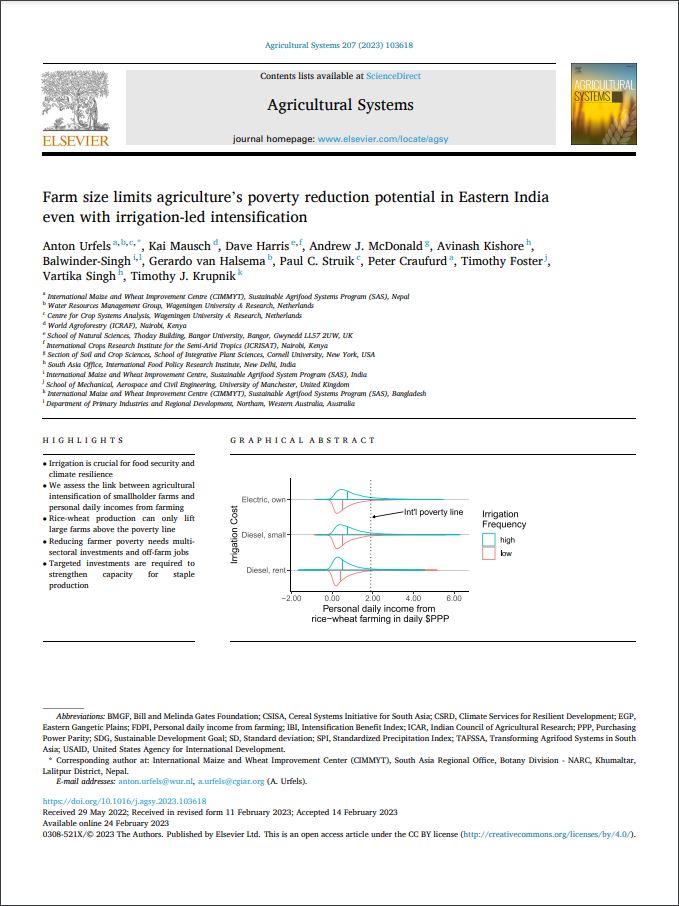CONTEXT: Millions of people living in the Eastern Gangetic Plains (EGP) of India engage in agriculture to support their livelihoods yet are income poor, and food and climate insecure. To address these challenges, policymakers and development programs invest in irrigation-led agricultural intensification. However, the evidence for agricultural intensification to lift farmers’ incomes above the poverty line remains largely anecdotal. OBJECTIVE: The main objective of this study is to use a large household survey (n = 15,572; rice: 8244, wheat: 7328; 2017/18) to assess the link between agricultural intensification and personal daily incomes from farming (FPDI) in the rice-wheat systems of the EGP – the dominant cropping system of the region. METHODS: We use the Intensification Benefit Index (IBI), a measure that relates farm size and household size to FPDI, to assess how daily incomes from rice-wheat production change with irrigation-led intensification across the EGP. RESULTS AND CONCLUSIONS: Relative to the international poverty line of 1.90 Purchasing Power Parity (PPP)$ day− 1 and accounting for variations in HH size in the analysis, we found that small farm sizes limit the potential for agricultural intensification from irrigation to transform the poverty status of households in the bottom three quartiles of the IBI. The estimated median FPDI of households with intensified systems in the bottom three quartiles is only 0.51 PPP$ day− 1 (a 0.15 PPP$ gain). The median FPDI increases to 2.10 PPP$ day− 1 for households in the upper quartile of the IBI distribution (a 0.30 PPP$ gain). Irrigation-led agricultural intensification of rice-wheat systems in the EGP may provide substantial benefits for resilience to climatic change and food security but achieving meaningful poverty reduction will require complementary investments. SIGNIFICANCE: Transforming the poverty status of most smallholder farmers in the EGP requires diversified portfolios of rural on- and off-farm income-generating opportunities. While bolstering food- and climate security, agronomic intervention programs should consider smallholders’ limited monetary incentives to invest in intensification. Irrigation-led agricultural intensification programs and policies should explicitly account for the heterogeneity in household resources, irrigation levels, and degree of dependence on agricultural income.

